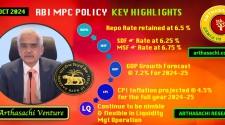
INVESTMENT GOALS MOST IMPORTANT ASPECT IN INVESTMENT PLANNING
As an Investor it’s important to set out clearing your Investment Goals before Investing.
Types of Goals
The most common investment goals are
-
Planning a comfortable retirement over a long term [ 15 years or more]
-
Property purchase over a long term [ 15 years or more]
-
Life events, Children’s education plans over a medium term [ 10-15 years]
-
Life events, Children’s marriage plans over a medium term [ 10-15 years]
-
Lifestyle funds, the old adage of saving for a rainy day over a medium to shorter term [ 5-10 years]
-
Lifestyle funds, buying dream sports car over a medium to shorter term [ 5-10 years]
-
Lifestyle funds, leisure holiday trip over a medium to shorter term [ 5-10 years], etc
The minimum time horizon for all types of Investing should be at least 5 years.
Once you finalize your Goals you know the amount you require, the time horizon when you need it; to achieve these goals. Managing your own funds offer a long-term investment strategy that can help you achieve specific goals. Investment involves application of scientific method and art of picking up the right funds to align with the life event that you are planning for, as its investment style will determine the returns you can expect over different timescales.
Multiple products are available to choose to achieve these goals. Do your research or revisit your goals with a financial advisor at a regular interval to account for any changes to your personal goals, due to changed circumstances like arrival of a new member to the family. This will ensure you invest in funds that can meet your financial goals at the right time in life.
Investments Strategies
Investment Strategies focus on adopting a balanced approach to include reward and mitigate risk aspects well; should often include a combination of various funds type to achieve your investment goals. Adopting a balanced approach is usually a key to the changes of achieving your investment goals, which bearing in mind that at the right time in life you will want access to your money.
Important is to allow for flexibility in your planning.
As a perfect craftsman, to achieve your life goal your investment strategies should focus to change gears with perfect allocation between equity to bonds to commodities to real estates in different stages of your life. We cover this aspect for you with specific example in our Long Term, Medium Term and Short-Term plan section.
It’s a great idea to use the SMART format while setting Investment Goals.
-
Specific – make each goal clear and specific
-
Measurable – frame each goal so that you know when you have achieved it
-
Achievable – you need to take practical action to achieve goal
-
Relevant – determine whether your goals relate to your life and are realistic
-
Time based – assign a timeframe to each goal so you can track progess
Let’s come to a most important aspect of plan, “Set your investment goals as early in life as possible.” It allows you flexibility to change gears, manoeuvre your investment strategies to achieve your goals. Planning and execution require a level of discipline and commitment to achieve this, often requires incorporating major changes in your lifestyle.
Long Term
Retirement Strategy covers shifting goals, where it is common for funds to be more gearing towards equities in its earlier stages which helps to build capital. As the individual grows closer to retirement age, the plan will tend to lean towards bonds to reduce volatility. Exposure withing the basket will reduce to riskier assets like commodities or real estate may gradually reduced as individual ages. A typical fund retirement plan may start out as 65% equities, 25% bonds, and 10% other, including real estate or commodities, when you start working. Towards closer to retirement, it moves to 65-70% bonds, 20-25 and rest in cash.
Medium Term
Medium Term Plan Strategy focus on to cover life events like Children’s education, marriage etc spread across 10-15 years’ time frame. Building a Corpus Funds to invest in a mix of equities, bonds and other investments in order to build enough capital to meet the life events. Most are geared to begin paying out after a fixed term say 10 years, with withdrawals allowed incrementally. Key in such plan is flexibility. Best time to start plan when baby is born so that they can start paying out when child move to secondary school or join higher studies.
Short Term
Short Term Plan Strategy focus on to cover your lifestyle like buying a dream car, leisure holiday etc spread across 5-10 years’ time frame. Building a Saving Funds which contains stocks and shares, depending on your timescale and risk appetite is an excellent strategy to build enough capital to meet the lifestyle events.
Top News
Other News
MARKETS
WEALTH
ECONOMICS
START UP
TECHNOLOGY
BUSINESS
Alliances and Partners

Arthasachi Venture Footprints


















